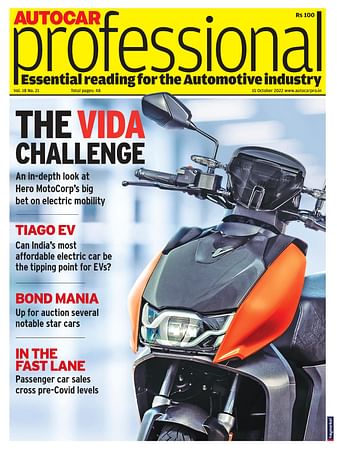New side wind stabilisation tech helps vehicles stay in lane
In-house developed system monitors sensors 100 times per second, and if a gust is detected, carefully applies the brakes on one side to help the driver stay in lane.
With most of Europe bracing for winter, and as the first winter storms begin to hit, strong gusting winds provide an additional challenge to motorists, particularly those driving high-sided vehicles on the motorway.
Ford says all its new Transit and Transit Custom commercial vehicles are fitted as standard with a new technology that helps drivers stay in lane when their van is hit by a sudden crosswind or the turbulence created by a large truck.
Side Wind Stabilisation is an advanced feature that was developed by Ford engineers, and works by carefully applying the brakes on one side of the vehicle to reduce the effect of a side wind gust on the vehicle’s path.
“No-one likes that feeling when your vehicle gets caught by a wind gust, or you are passing close to a fast-moving truck,” said Marc Suermann, chassis controls supervisor, Ford of Europe. “This new technology will help make motorway driving less stressful for Transit drivers, particularly on those dark and stormy winter days.”
At vehicle speeds over 80kph (50mph), the Side Wind Stabilisation system monitors stability sensors 100 times per second. If a sudden gust is detected, the feature can become active within less than 200 milliseconds – the time it takes a sprinter to react to the starting pistol.
Ford engineers tested the new system at a special test track which uses six powerful fans to generate crosswinds of up to 80kph, as well as on public roads in areas which are notorious for strong winds, such as the North Sea coast of the Netherlands.
RELATED ARTICLES
Sept 2024 From R&D incentives to EV infrastructure: What auto components industry expects from Budget 2024
Sept 2024 From R&D incentives to EV infrastructure: What auto components industry expects from Budget 2024
US car majors hit the brakes on driverless cars
Ford Motor and Volkswagen to close self-driving startup Argo AI, due to lack of technology and clear regulations.
Autoliv and Geely to develop advanced safety tech for future vehicles
Scope of cooperation includes safety for high-level autonomous driving, intelligent steering wheel technology, a 360deg ...






 By Autocar Pro News Desk
By Autocar Pro News Desk
 26 Nov 2016
26 Nov 2016
 5458 Views
5458 Views









